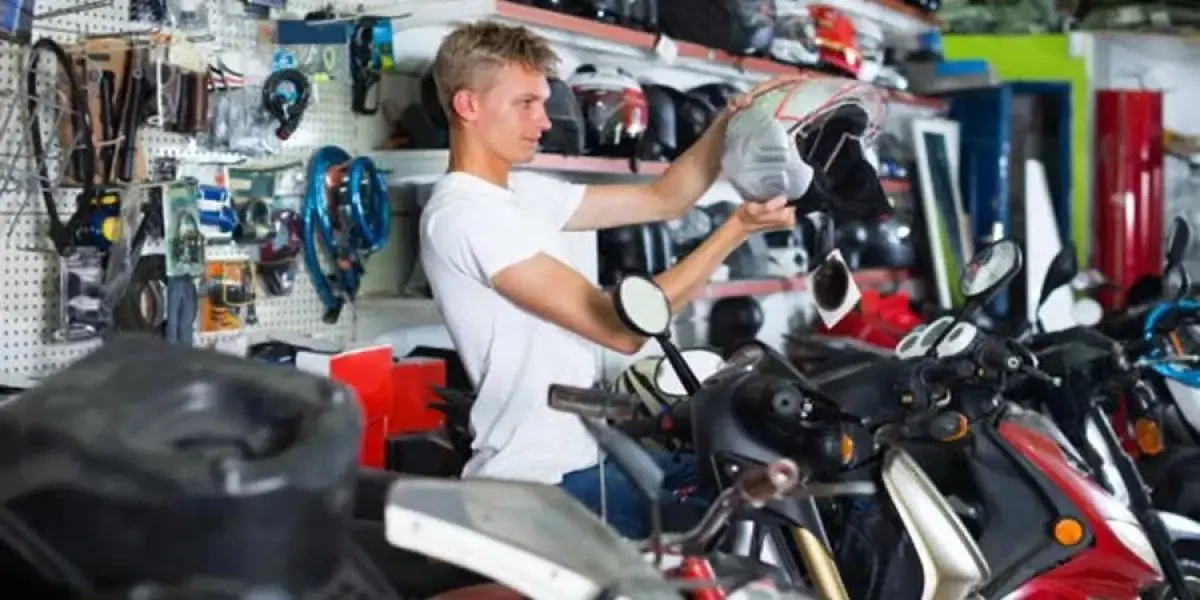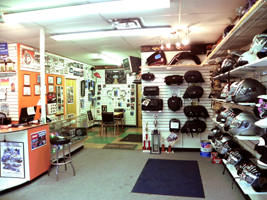Explore the most up to date Motocross Gear NZ for each Degree of Rider
Recognizing the Important Parts of a Motorbike: A Comprehensive Overview for Lovers
For bike enthusiasts aiming to raise their riding experience and guarantee their bikes run efficiently, recognizing the essential elements of a bike is vital. Each aspect, from the engine's complex functions to the essential function of the braking devices, not just influences efficiency but likewise security and comfort. This overview will walk through the basic parts that every biker must know with, allowing notified selections in both maintenance and potential upgrades. As we start this exploration, one must ask: just how does each element interact to produce the seamless experience every lover seeks?
Engine Parts

The camshaft plays a vital duty in managing the timing of the engine's shutoffs, guaranteeing the exact opening and closing required for effective gas and air intake, as well as exhaust expulsion. This timing is essential to preserving optimum engine performance and efficiency. In addition, the carburetor or fuel injection system, relying on the bike design, is liable for mixing air with fuel in the correct ratio for burning.
The cooling system, either air or liquid-based, works to keep the engine's temperature within operational limits, protecting against getting too hot and making sure long life - motocross gear nz. Each part, thoroughly developed and integrated, adds to the smooth operation of the engine, defining the bike's power output and overall efficiency
Transmission System
Integral to the bike's functionality, the transmission system guarantees efficient power transfer from the engine to the wheels. This system comprises several critical components, consisting of the clutch, gearbox, and final drive, each playing an important duty in equating the engine's power right into activity. The clutch, normally operated by a hand lever, offers to involve and disengage the engine from the transmission, permitting for smooth gear changes and controlled velocity.
The transmission, typically referred to as the transmission appropriate, includes a collection of gears that bikers can manually shift with to change the bike's speed and torque output. These equipments are arranged in a series that makes it possible for the motorbike to speed up smoothly and maintain optimum engine efficiency across numerous rates. A lot of motorbikes utilize a sequential gearbox, calling for the motorcyclist to move gears in an established order.
Braking Mechanisms
While recognizing the transmission system is crucial to taking advantage of a motorbike's power, similarly essential is the ability to manage and stop that power successfully, which is where stopping devices enter play. Brakes are vital for security and performance, giving the cyclist with the necessary control to browse various surfaces and problems. Normally, motorbikes include 2 types of braking systems: disc brakes and drum brakes.
Disc brakes are much more common in modern motorcycles due to their remarkable efficiency. This system supplies far better heat dissipation, regular performance, and enhanced quiting power, specifically in wet conditions.
Alternatively, drum brakes, though less typical, are still located in some click here now motorcycles. They work by pressing brake shoes versus the inner surface of a drum connected to the wheel. While usually much less effective in warm dissipation and quiting power, drum brakes are simpler and a lot more economical.
Recognizing these braking systems' subtleties enables motorcyclists to preserve their bikes appropriately and appreciate the design that guarantees efficient and risk-free stopping.
Suspension and Guiding
Suspension and steering systems are vital elements that substantially affect a bike's handling and adventure comfort. The shock absorber, being composed of forks at the front and shock absorbers at the rear, absorbs roadway abnormalities, enhancing security and control. Front forks, upside down or usually telescopic, compress and rebound to minimize effects, while back shock absorbers maintain tire contact with the road, essential for grip and security.
Guiding, centered around the handlebars, links the cyclist to the motorbike's directional control. The guiding head bearings make sure smooth recommended you read operation, enabling exact maneuverability. Correct placement and maintenance of these bearings are important for foreseeable guiding response and reducing rider fatigue.
The suspension's adjustability is an additional critical aspect; preload, damping, and rebound setups enable modification to match various riding problems and designs. This adaptability is crucial for maximizing performance, whether browsing urban streets or tackling tough tracks. Innovations like digital suspension systems supply real-time adjustments, boosting ride quality across varied terrains.

Electric Solutions
After making certain a controlled and smooth trip through reliable suspension and steering systems, focus transforms to the electric systems, a pivotal facet of contemporary motorcycles. These systems play a crucial function not just in beginning the engine however likewise in powering various parts that improve the performance and safety and security of the bike.
At the heart of a motorbike's electric system is the battery, which stores electrical energy needed for starting the engine and powering supporting systems - motox parts nz. The alternator or generator, paired with the rectifier-regulator, ensures the battery stays charged while the bike is in operation, converting power into electric energy and maintaining voltage degrees
The ignition system, one more critical element, is responsible for stiring up the air-fuel combination in the engine's cylinders. Modern motorbikes usually make use of an electronic ignition system, offering better performance and dependability compared to standard systems.
Illumination systems, including fronts lights, tail lights, and indications, are likewise crucial, making certain exposure and safety for the rider. Extra digital from this source parts such as sensors, control devices, and presents contribute to advanced functions like gas shot monitoring, anti-lock braking systems (ABS), and electronic control panels, even more boosting the riding experience.
Conclusion
A detailed understanding of a motorcycle's crucial components, consisting of the engine, transmission system, stopping mechanisms, suspension, steering, and electrical systems, is vital for lovers intending to optimize security, convenience, and performance. Proficiency of these elements enables informed decisions concerning maintenance and upgrades, inevitably enhancing the riding experience. By integrating this knowledge, cyclists can ensure their bikes run at peak performance and reliability, thereby optimizing both pleasure and durability of their cars.
For motorcycle lovers looking to boost their riding experience and ensure their bikes run smoothly, recognizing the important elements of a bike is extremely important.Essential to the bike's performance, the transmission system guarantees reliable power transfer from the engine to the wheels.While comprehending the transmission system is crucial to harnessing a motorcycle's power, just as essential is the capacity to regulate and quit that power effectively, which is where braking systems come into play. Commonly, bikes include two types of braking systems: disc brakes and drum brakes.
A comprehensive comprehension of a bike's necessary parts, consisting of the engine, transmission system, stopping systems, suspension, steering, and electrical systems, is crucial for fanatics aiming to optimize performance, safety, and comfort.